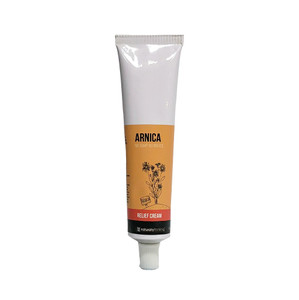
Arnica Infused in Sunflower
Arnica montana oil steeped in Sunflower, traditionally used in blends to help aid bumps and bruises.
Arnica montana oil steeped in Sunflower, use in blends to help aid bumps and bruises.
Arnica montana
Arnica montana is endemic to Europe, from southern Iberia to Southern Scandinavia and the Carpathians. It is absent from the British Isles and the Italian and Balkan Peninsulas. Our Arnica is mainly collected from the Carpathian Mountain Range in Romania.
Arnica montana grows in nutrient-poor silcaceous meadows up to nearly 3000 m. It is rare overall, but may be locally abundant. It is becoming rarer, particularly in the north of its distribution, largely due to increasingly intensive agriculture. In more upland regions, it may also be found on nutrient-poor moors and heaths.
Arnica montana was introduced into European folk medicine by shephards that noticed when sheep fell and bruised themselvs they nibbled on the leaves of the Arnica plant.
Characteristics
Arnica has long been used in skin care preparation for its properties. It has very little scent.
The Arnica in our extract is 20% active and therefore not suitable for direct application to the skin as it is to strong. It should be further be blended with Creams and Oils to form a custom blend.
In homoeopathy Arnica is associated with wound healing and bumps and bruises. Arnica oil is energising, powerful, a curative, resistant and protecting to the skin.
Arnica is a Tonica, antioedema, revulsive, antiseptic(2). Stimulates hair growth. It has antiphlogistic effects and in some cases antiseptic and analgesic(1). Anti-inflammatory, wound-healing(3). The sesquiterpene lactones helenalin acetate and 11,13-dihydrohelenalin have antibacterial and antifungal activities in vitro. Acidic polysaccharide fractions from Arnica extract have strong immunostimulating activities in vitro. Helenalin also had immunostimulating activing in a prelimanary screening.(1)
Oils to Blend with
Arnica blends well with Bergamot, Frankincense, Geranium, Orange, Mandarin, Neroli, Palmarosa, Rose, Rosewood and Sandalwood.
Latin Name
Arnica montana
Plant Family
Asteraceae
Extraction Method
Steeped Arnica montana flowers in Sunflower
Country of Origin
Europe
Usage Level
Use at 1 - 5% in blends for
Chemical Constituents
The main active ingredients in Arnica are hydrocarbons, esters, ethers, alcohols, triterpene alcohols, sesquiterpene lactones, phenol acids, tannins, cholne, inulin, flavonoids, carotenoids, sugars, phyosterols, coumarins and fatty acids.

Arnica montana infused in Sunflower
Precautions
We recommend avoiding Arnica during pregnancy. Do not apply Arnica to broken skin, even if there is a bruise in the area.
(1) Leung AY, Foster S. Encylopedia of Common Natural Ingredients used on Food, Drugs and Cosmetics. John Wiley & Sons, Inc. New York 1996.
(2) Plant preparations used as ingredients of cosmetic products. Council of Europe Press Strasbourg, 1989.
(3) Wyk, Ben-Erik van; Wink, Michael: Medicinal plants of the world. Pretoria: Briza publications, 2004.
(4) http://botanical.com/botanical/mgmh/a/arnica058.html [15.12.04]
- Blends Well With:
- All oils
- Contraindications:
- Avoid During Pregnancy, Do not apply to open skin, Do not use on Children under 3, Use at a maximum of 5% in a blend
- Country of Origin:
- Europe
- Latin Name:
- Arnica montana (Arnica) Flower Extract, Helianthus annus (Sunflower) Seed Oil
- Traditional Physical Properties:
- Muscle Aches & Pains
- Part of Plant Used:
- Flowering Tops
- Purity:
- 100% Pure Maceration
- Scent:
- N/A
- SkinLogo:
- 3
- Key Benefits:
- Pure Oil for Dilution
- Traditional Emotional Use:
- N/A
- Traditional Skin Use:
- Bruises
- HS Code:
- 33049990
- HS Description:
- Arnica cosmetic oil
- HS Country:
- GB
- HS Composition:
- Viscous Liquid
Ingredients
You can view the full ingredients by Clicking Here
Arnica Infused in Sunflower Safety Data Sheet (SDS)
Arnica Infused in Sunflower The SDS can be downloaded by Clicking Here
Arnica Infused in Sunflower Technical Data Sheet (TDS)
Arnica Infused in Sunflower The TDS can be downloaded by Clicking Here
Arnica Infused in Sunflower Certificate of Analysis (COA)
Generate the certificate of analysis for your purchased product by entering your Batch Number which can be found on the packaging of your product.
Arnica Infused in Sunflower Allergens Declaration
Generate an allergens declaration for your purchase (essential oils only)




